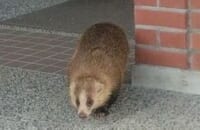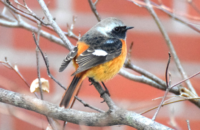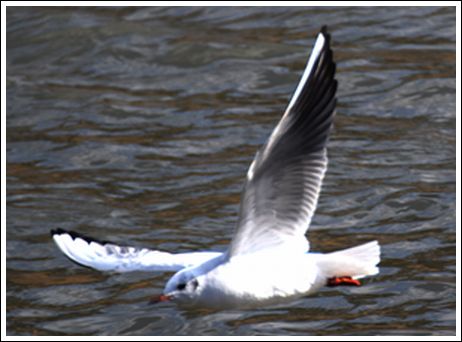
本校には、ツバメ、ツグミなど数多くの渡り鳥が訪れていますが、今回は岩倉川の水が流れる先の鴨川で観られる冬鳥です。
ユリカモメは、繁殖地のカムチャツカ半島から数千キロ離れた京都鴨川まで飛来し、春先まで過ごします。5月頃になると頭部の羽が黒くなり、まさしく英名「Black headed Gull」となってカムチャツカに戻ります。
 京都では1974年に初確認されたユリカモメですが、私は1990年代に野鳥研究家の方とユリカモメを網で捕獲し「足環」を付ける活動に参加したことがあります。
京都では1974年に初確認されたユリカモメですが、私は1990年代に野鳥研究家の方とユリカモメを網で捕獲し「足環」を付ける活動に参加したことがあります。
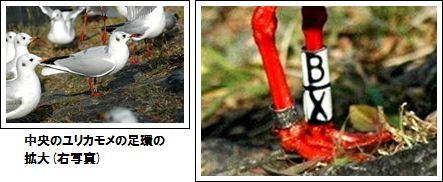
鳥笛でユリカモメを誘い、網で捕獲したあと、布袋に入れて気持ちを落ち着かせ、しばらくしてから体重、翼長などの基本デ-タを測定します。その後、写真のような環境省の金属足環とカラ-リングを取り付けるのです。こうした標識鳥の調査は、当時ロシアのゲラシモフ博士との共同研究で進められました。
私が今でも忘れられない瞬間は、測定のために布袋から取り出した時、首を反転させて測定者の手に激しく噛みついたことです。「野生の力」を眼前で実感したひとときでした。
もし、みなさんが観察している時、「足環」をしたユリカモメがいたら写真を持参してくれたらとても嬉しいです。今年はなぜか丸太町橋より南に集合しています。
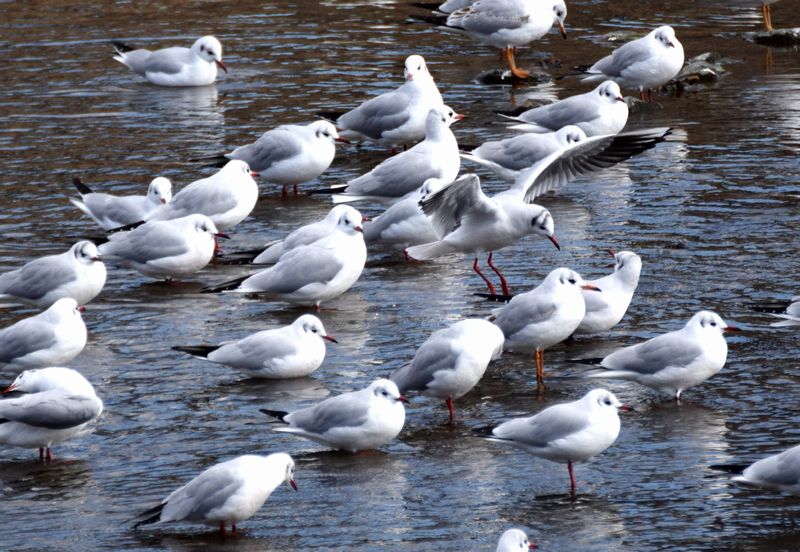
A lot of migrating birds such as Swallows and Thrushes can be seen around our school, but this time I will introduce a bird that can be seen during the winter along the Kamogawa River.
The Black Headed Gulls flies several thousand kilometers to Kyoto from its breeding grounds in Kamchatka Peninsula, where they stay until spring. Around May, the feathers on their heads darken to black and the “Black Headed Gulls” fly back to the Kamchatka Peninsula.
These gulls were first seen in Kyoto in 1974, and I helped bird researchers to capture them in nets and tag them with bands on their legs. We lured them with bird whistles and caught them in nets. We then put them in cloth bags to calm them down for a while before we weighed them and recorded their details. Then we put metal colored bands from the Ministry of Environment on their legs. This was part of a shared research project with Professor Gerasimov in Russia.
I cannot forget the time I took a gull out of the cloth bag and it turned its neck around and bit me. I got to see the power of nature.
If you get a chance to see any of these gulls with tags on their legs, please take a photo for me.

